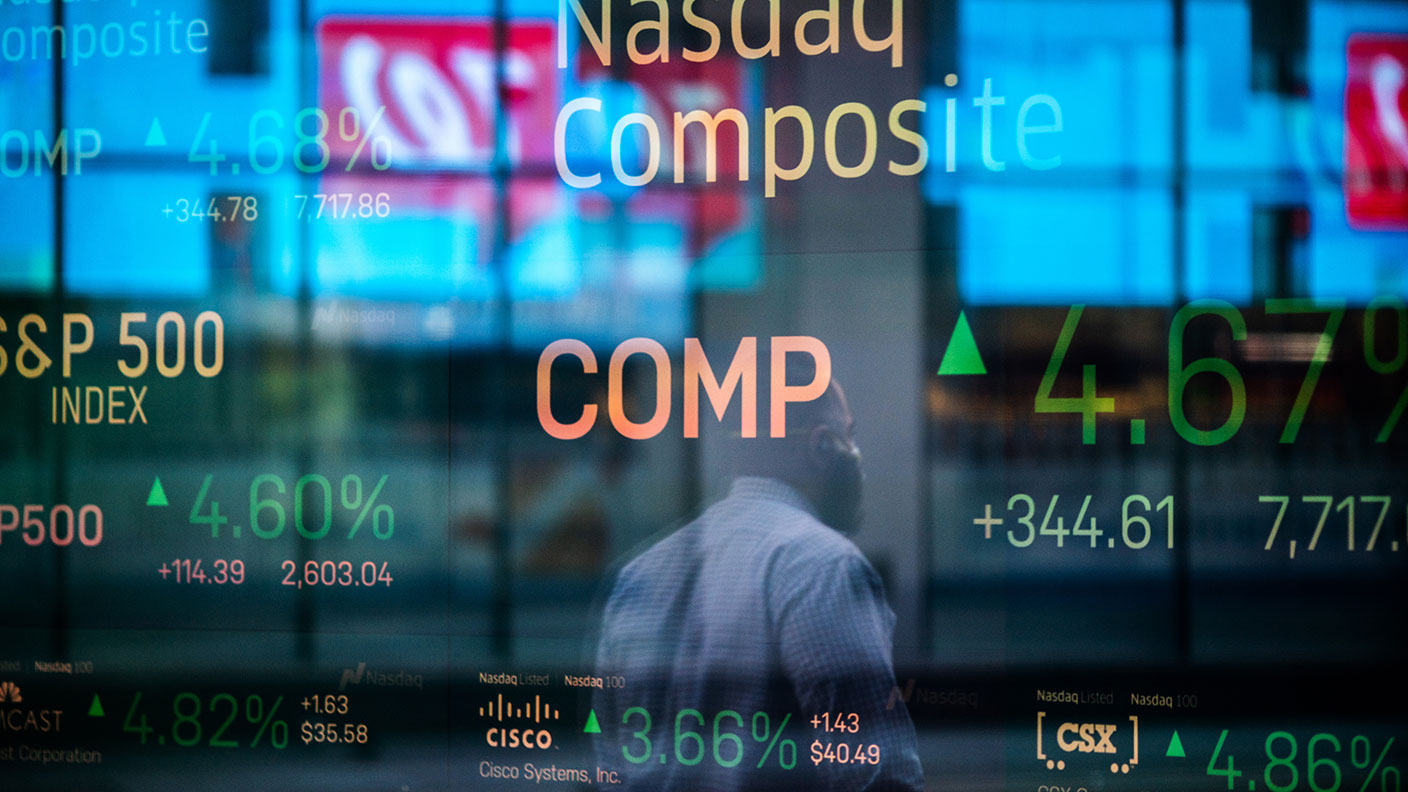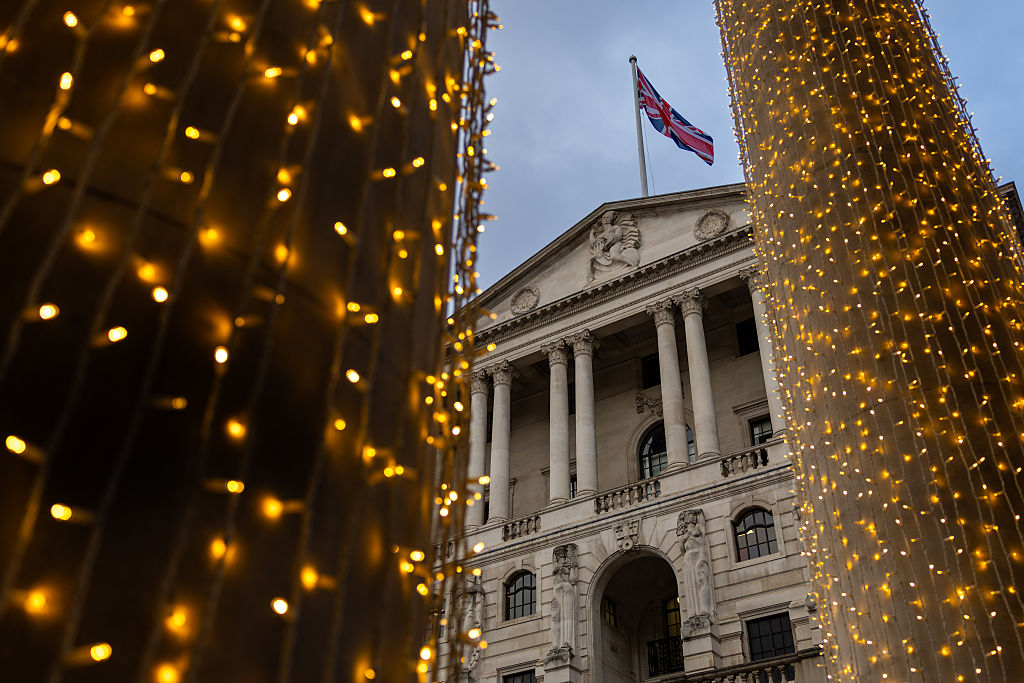Disease, rioting and mass unemployment – so why are markets soaring?
Despite some pretty strong headwinds in the last year, America’s S&P 500 stock index is close to all-time highs. John Stepek explains why markets seem to be defying gravity.


A colleague working on another magazine sent me a message on Slack yesterday. He said he’d made a bit of money in markets recently, which he was pleased about, as we all are when we make a bit of money in markets.
On the other hand, he said, he still couldn’t quite believe just how strong the rally has been. This apparent disconnect is baffling many more people than just my colleague.
So let’s have a look at what’s going on and see if we can explain it.
MoneyWeek
Subscribe to MoneyWeek today and get your first six magazine issues absolutely FREE

Sign up to Money Morning
Don't miss the latest investment and personal finances news, market analysis, plus money-saving tips with our free twice-daily newsletter
Don't miss the latest investment and personal finances news, market analysis, plus money-saving tips with our free twice-daily newsletter
You’ll never believe how much markets have moved in just a year
This morning in his excellent newsletter for Bloomberg, John Authers points out that according to data from Bespoke Investment Group, the S&P 500 has just seen its biggest 50-day rally since at least 1952, and probably ever. The US market is up nearly 40% from its low on 23 March.
The S&P 500’s all-time high came in February this year, with a peak above 3,380. The index is now trading at 3,122. In other words, if it rises by just another 9% from here (or slightly less in fact), we’ll be back at record highs.
You can see why investors might be baffled.
This time last year, on 4 June 2019, there was no pandemic. There was record employment instead of depression-era levels of unemployment. There was no rioting in major US cities.
There was plenty of tension between China and America, but I think you'd be hard-pressed to argue that it hasn’t got a good deal worse since then. Hong Kongers were still able to mark the anniversary of the 1989 Tiananmen Square massacre with their annual vigil.
Have a guess at where the S&P 500 was this time last year?
Just over 2,800. The market – against that aforementioned backdrop of serious civil unrest, a global pandemic of still-uncertain duration, mass unemployment, and a burgeoning Cold War – is up 11% in a year.
No wonder we’re seeing the confusion. It’s one thing to shrug your shoulders at geopolitical tensions – markets are generally pretty good at that. It’s quite another to toss aside extreme joblessness. So what’s going on?
The rally has been led by a very small group of stocks
First things first. Using the S&P 500 as your benchmark is a little bit deceptive. The FTSE 100, by contrast, has rebounded strongly, but remains nearly 12% down year-on-year (and a lot of the dividends investors were hoping for have been ditched, too).
Until last week, it was a similar story for the EuroStoxx 50, though that’s had a massive rally in the past week on hopes of a fiscal stimulus package for the European Union as a whole.
It’s also worth noting that the S&P’s outperformance has been largely driven by a handful of stocks. As my colleague Cris Sholto Heaton notes in this week’s issue of MoneyWeek (out tomorrow, get your first six issues free right here), if you exclude the big tech stocks then the S&P’s performance is little better than that of global markets as a whole.
In other words, the lion’s share of the rebound has been driven by Alphabet/Google, Apple, Amazon, Facebook, Microsoft and Netflix. So when you look at it like that, it doesn’t seem quite as incongruous.
These stocks were already the hot stocks of the era, and coronavirus hasn’t changed that. Some are very obvious beneficiaries of lockdown (Amazon, Netflix), while the others aren’t necessarily disadvantaged by it (Google and Facebook might need advertising revenue, but they’re still in the best place to get it, while Apple might face disruption but still has subscriptions).
So it’s too simplistic to view the markets as being entirely sanguine about all this stuff. There’s a catch-up rally happening now in the more cyclical, vulnerable stocks, but the initial charge higher has been led by the sector that was best-placed to navigate corona.
Investors believe – probably correctly – that business as usual will return
However, it’s also far too simplistic to put this down to market efficiency and investors being able to “look through” the impact of coronavirus.
The clear reason for the rebound is all of the money that has been thrown at the problem. For a start, the market bottomed when America’s central bank, the Federal Reserve, announced all its “big bazooka” moves back at the end of March. That’s a pretty clear signal.
What does the money printing do? It’s not that this money goes directly into equities (although some of it does get there in a roundabout way). What the Fed (and other central banks) did was to eradicate “tail risk” in the market. Put more simply, it pumped more money into more places than ever before, convincing markets (correctly) that systemic risk – the danger that the financial system would collapse, similarly to 2008 – had been taken off the table.
Once the threat of something blowing up unexpectedly had been avoided, investors were left to focus on prospects. And the reality is this: it might take a while, but one day we will be back to business as usual. Some trends will have been accelerated, but people will still take holidays and people will still congregate and people will still consume and generally be human.
I think this is where a comparison to the Sars outbreak in Asia, of 2002-2003, really does help. Not in terms of the market – which was coming off the post-dotcom crash – but in terms of people’s behaviour. In relative terms, Sars was far less serious, but it was still terrifying. Yet its overall economic impact was temporary.
So if, as an investor, you assume that central banks can take care of the financial system; and you assume that coronavirus will be bad, but temporary, particularly given the assistance dished out by global governments; and you weren’t worried about valuations before the outbreak (this of course is another issue) – then why wouldn’t you invest?
Four things that could derail the market rally
The question, then, is more: what could derail this? On that front, Louis Gave of Gavekal put out a good piece a few days ago, outlining the most obvious threats.
One is that Europe fails to make a convincing enough move towards fiscal union. We’ve seen a big bounce in markets predicated on the belief that the bailout package won’t disappoint – but that’s something the EU has a habit of doing.
Another is that the US-China relationship deteriorates sharply and drastically, rather than slowly and predictably. This may be unlikely before the presidential election, simply because it would likely hurt the market.
Another oil price collapse would indicate a slip towards a more deflationary environment again. This one seems unlikely.
Finally, if the Fed fails to fund the massive amount of debt being issued by the US then that would be a problem. But again, tighter monetary policy (which is what this would add up to) seems highly unlikely (and even if it happened, it would stop as soon as the Fed noticed the impact on markets).
So those are the things to watch out for. In the meantime, stick to your plan – have an ideal asset allocation for your portfolio, and invest regularly with that in mind. And if you don’t have a plan – get one.
Oh, and subscribe to MoneyWeek if you don’t already.
Get the latest financial news, insights and expert analysis from our award-winning MoneyWeek team, to help you understand what really matters when it comes to your finances.
John Stepek is a senior reporter at Bloomberg News and a former editor of MoneyWeek magazine. He graduated from Strathclyde University with a degree in psychology in 1996 and has always been fascinated by the gap between the way the market works in theory and the way it works in practice, and by how our deep-rooted instincts work against our best interests as investors.
He started out in journalism by writing articles about the specific business challenges facing family firms. In 2003, he took a job on the finance desk of Teletext, where he spent two years covering the markets and breaking financial news.
His work has been published in Families in Business, Shares magazine, Spear's Magazine, The Sunday Times, and The Spectator among others. He has also appeared as an expert commentator on BBC Radio 4's Today programme, BBC Radio Scotland, Newsnight, Daily Politics and Bloomberg. His first book, on contrarian investing, The Sceptical Investor, was released in March 2019. You can follow John on Twitter at @john_stepek.
-
 What are my retirement income options?
What are my retirement income options?We’re all told to save into a pension, but there’s widespread confusion about how to take an income from our savings and investments at retirement, a new study has found. We look at your retirement income options.
-
 UK interest rates: will the Bank of England lower rates?
UK interest rates: will the Bank of England lower rates?The Bank of England’s Monetary Policy Committee’s (MPC) final interest rates meeting of the year takes place tomorrow (18 December) and most experts expect a cut
-
 Halifax: House price slump continues as prices slide for the sixth consecutive month
Halifax: House price slump continues as prices slide for the sixth consecutive monthUK house prices fell again in September as buyers returned, but the slowdown was not as fast as anticipated, latest Halifax data shows. Where are house prices falling the most?
-
 Rents hit a record high - but is the opportunity for buy-to-let investors still strong?
Rents hit a record high - but is the opportunity for buy-to-let investors still strong?UK rent prices have hit a record high with the average hitting over £1,200 a month says Rightmove. Are there still opportunities in buy-to-let?
-
 Pension savers turn to gold investments
Pension savers turn to gold investmentsInvestors are racing to buy gold to protect their pensions from a stock market correction and high inflation, experts say
-
 Where to find the best returns from student accommodation
Where to find the best returns from student accommodationStudent accommodation can be a lucrative investment if you know where to look.
-
 The world’s best bargain stocks
The world’s best bargain stocksSearching for bargain stocks with Alec Cutler of the Orbis Global Balanced Fund, who tells Andrew Van Sickle which sectors are being overlooked.
-
 Revealed: the cheapest cities to own a home in Britain
Revealed: the cheapest cities to own a home in BritainNew research reveals the cheapest cities to own a home, taking account of mortgage payments, utility bills and council tax
-
 UK recession: How to protect your portfolio
UK recession: How to protect your portfolioAs the UK recession is confirmed, we look at ways to protect your wealth.
-
 Buy-to-let returns fall 59% amid higher mortgage rates
Buy-to-let returns fall 59% amid higher mortgage ratesBuy-to-let returns are slumping as the cost of borrowing spirals.
